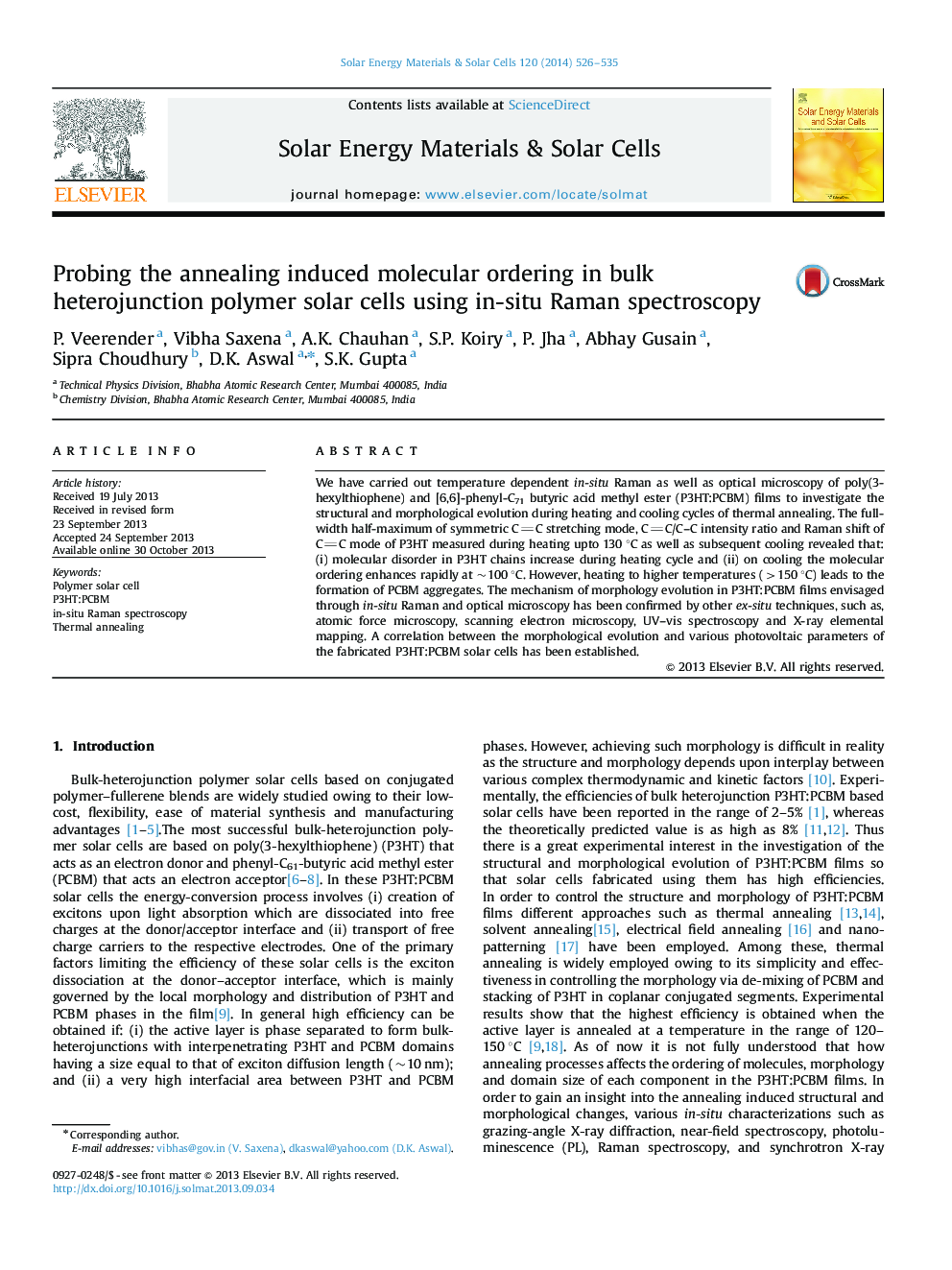| Article ID | Journal | Published Year | Pages | File Type |
|---|---|---|---|---|
| 78162 | Solar Energy Materials and Solar Cells | 2014 | 10 Pages |
•In-situ Raman as well as optical microscopy of poly(3-hexylthiophene) and [6,6]-phenyl-C71 butyric acid methyl ester films to investigate structural and morphological evolution.•Molecular disorder in P3HT chains increases during heating cycle and enhances rapidly at ~100 °C during cooling.•A correlation between morphological evolution and photovoltaic parameters of fabricated P3HT:PCBM solar cells has been established.
We have carried out temperature dependent in-situ Raman as well as optical microscopy of poly(3-hexylthiophene) and [6,6]-phenyl-C71 butyric acid methyl ester (P3HT:PCBM) films to investigate the structural and morphological evolution during heating and cooling cycles of thermal annealing. The full-width half-maximum of symmetric CåC stretching mode, CåC/C–C intensity ratio and Raman shift of CåC mode of P3HT measured during heating upto 130 °C as well as subsequent cooling revealed that: (i) molecular disorder in P3HT chains increase during heating cycle and (ii) on cooling the molecular ordering enhances rapidly at ~100 °C. However, heating to higher temperatures (>150 °C) leads to the formation of PCBM aggregates. The mechanism of morphology evolution in P3HT:PCBM films envisaged through in-situ Raman and optical microscopy has been confirmed by other ex-situ techniques, such as, atomic force microscopy, scanning electron microscopy, UV–vis spectroscopy and X-ray elemental mapping. A correlation between the morphological evolution and various photovoltaic parameters of the fabricated P3HT:PCBM solar cells has been established.
Graphical abstractFigure optionsDownload full-size imageDownload as PowerPoint slide
